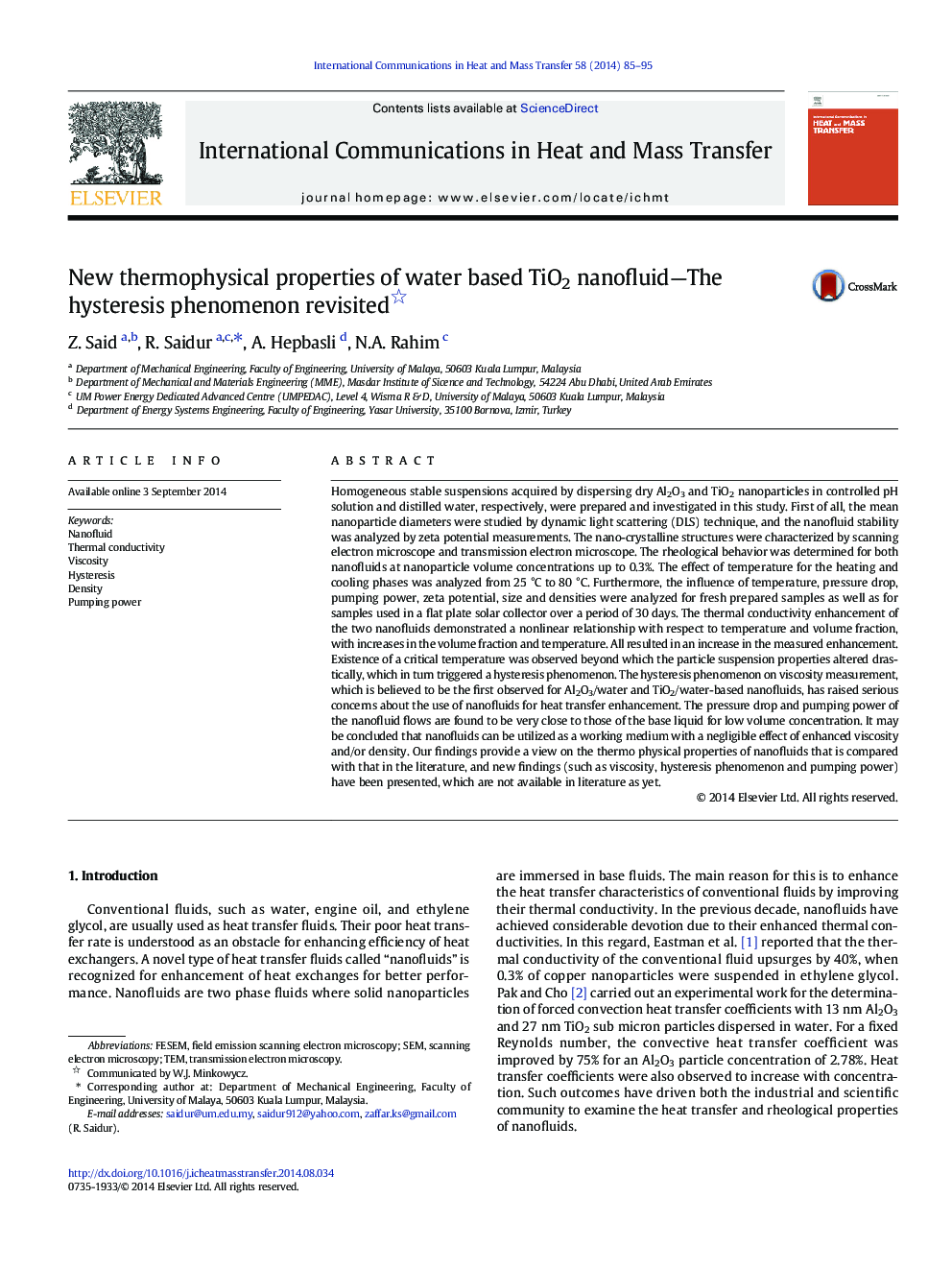| Article ID | Journal | Published Year | Pages | File Type |
|---|---|---|---|---|
| 653283 | International Communications in Heat and Mass Transfer | 2014 | 11 Pages |
Homogeneous stable suspensions acquired by dispersing dry Al2O3 and TiO2 nanoparticles in controlled pH solution and distilled water, respectively, were prepared and investigated in this study. First of all, the mean nanoparticle diameters were studied by dynamic light scattering (DLS) technique, and the nanofluid stability was analyzed by zeta potential measurements. The nano-crystalline structures were characterized by scanning electron microscope and transmission electron microscope. The rheological behavior was determined for both nanofluids at nanoparticle volume concentrations up to 0.3%. The effect of temperature for the heating and cooling phases was analyzed from 25 °C to 80 °C. Furthermore, the influence of temperature, pressure drop, pumping power, zeta potential, size and densities were analyzed for fresh prepared samples as well as for samples used in a flat plate solar collector over a period of 30 days. The thermal conductivity enhancement of the two nanofluids demonstrated a nonlinear relationship with respect to temperature and volume fraction, with increases in the volume fraction and temperature. All resulted in an increase in the measured enhancement. Existence of a critical temperature was observed beyond which the particle suspension properties altered drastically, which in turn triggered a hysteresis phenomenon. The hysteresis phenomenon on viscosity measurement, which is believed to be the first observed for Al2O3/water and TiO2/water-based nanofluids, has raised serious concerns about the use of nanofluids for heat transfer enhancement. The pressure drop and pumping power of the nanofluid flows are found to be very close to those of the base liquid for low volume concentration. It may be concluded that nanofluids can be utilized as a working medium with a negligible effect of enhanced viscosity and/or density. Our findings provide a view on the thermo physical properties of nanofluids that is compared with that in the literature, and new findings (such as viscosity, hysteresis phenomenon and pumping power) have been presented, which are not available in literature as yet.
